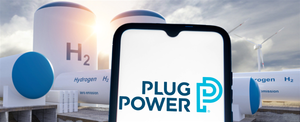Alaska’s massive size and diverse landscape have created unique energy needs and challenges. Alaska is not connected to large interstate energy grids like most other states.
Scientists at the U.S. Department of Energy’s (DOE) Argonne National Laboratory led a study to determine the potential of pumped storage hydropower as an efficient way to store large amounts of energy and improve grid resiliency throughout Alaska. Argonne partnered with the DOE’s National Renewable Energy Laboratory (NREL) for the project funded by DOE’s Water Power Technologies Office.
Scientists at both labs collaborated on mapping and geospatial analysis to identify Alaska locations feasible for pumped storage hydropower. Unlike conventional hydroelectric power, pumped storage hydropower technology generates electricity when water is released from an upper reservoir through turbines into a lower reservoir. At night, when electricity is cheaper and abundant, the turbines are reversed to pump water back up into the elevated upper reservoir. Power is stored and released when needed.
Along with reducing carbon emissions, renewable energy can lower the cost of electricity driven by the high cost of delivering diesel fuel to Alaska’s remote areas. Electricity in Alaska is among the costliest in the nation. Residents in rural areas pay 3-4 times more than those living in urban areas.
Argonne researchers evaluated pumped storage hydropower potential in Alaska’s integrated Railbelt system. The transmission grid comprises five regulated public utilities that extend from the cities of Fairbanks to Anchorage and the Kenai Peninsula. Approximately 80% of the Railbelt’s electricity comes from natural gas, which emits carbon dioxide.
Argonne scientists created detailed models using A-LEAF (Argonne Low-Carbon Electricity Analysis Framework), an integrated national-scale simulation framework for power system operations and planning. Argonne scientists studied past and present energy transmission trends. They analyzed overall growth in electricity demand expected in the next 25 years. A-LEAF also considered retiring existing generators as they reach their economic lifetime.
Pumped storage hydropower provides roughly 10 or more hours of energy storage. The study showed that lithium-ion batteries were feasible for short-term (four-hour) energy storage in the Railbelt system.
Along with validating the use of pumped storage hydropower as a viable technology for reducing carbon emissions, the Argonne-NREL study offers guidance on developing clean energy policies and regulations and making investment decisions.
View source version on businesswire.com: https://www.businesswire.com/news/home/20230720553492/en/
Contacts
Christopher J. Kramer
Head of Media Relations
Argonne National Laboratory
media@anl.gov
Office: 630.252.5580





